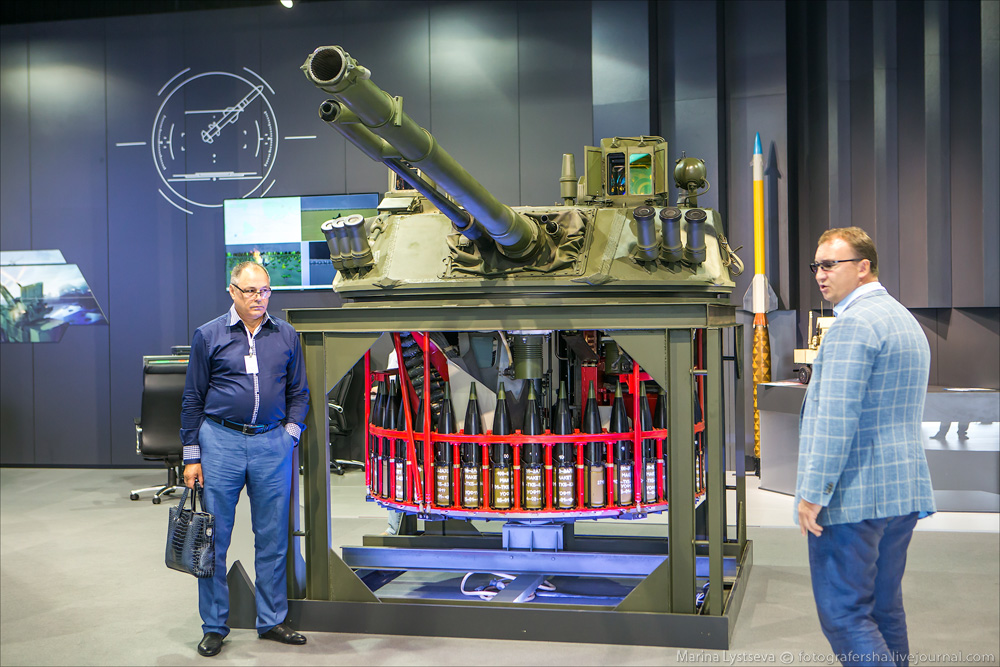From the very beginning BMP-3 could have been used for both direct and indirect fire.
Yes, I know. The HE rounds are low pressure and medium pressure and have to be lobbed at the target.
This allowed a new 3UOF19 round with 3OF70 projectile to reach a 7000m of direct fire range and 5500m of effective range for 9M117M1 Arkan.
Its indirect fire range is 8700m if we stick to official data. It produces almost twice as much fragments, and covers a 350m2 area.
I find that a bit confusing because to me indirect fire is shells fired with the gun elevation above 45 degrees, with direct fire obviously being below 45 degrees.
With something like a rifle the difference is clear because a Mosin rifle with its iron sights go out to 2,000m but even when adjusted to 2,000m or 2km the barrel elevation is probably less than 15 degrees. Firing at greater ranges means increasing elevation and max ballistic range would be reached at a 45 degree barrel angle... but then if you keep going to a higher barrel angle the bullet impact point does not continue to get further and further away... as you get above about 45 degrees the impact point actually starts to get shorter and shorter till the barrel is vertical (90 degrees) and the bullets will start landing around your position.
Any shots taken above 45 degrees are indirect fire.
The BG-15 underbarrel 40mm grenade launcher has two aiming scales on it... one in red and one in white... white is the direct fire scale and red is indirect. With a bit of practise you can load a grenade and set the range scale to hit a target... say at 250m range. You fire that grenade at 250m Red and then flip the sight to 250 white and muzzle load another grenade all the while counting out the seconds... when you get to 12 you fire your second grenade and both grenades should land at about 250m range almost at the same time... the indirect grenade taking 12 seconds longer to get to the target because its high flight profile.
My point is that both scales max out at about 410-450m so direct fire and indirect fire are not different in terms of max range.
The idea behind a 120mm multi pressure gun is that one vehicle could be used as a howitzer, mortar and lesser tank gun.
What you are essentially saying is that the 120mm gun/mortar should be upgraded to replace the 125mm tank gun and the 152mm howitzer.
Having the same gun for all three roles does not make sense... as a mortar the barrel will likely last much longer than a tank gun or a howitzer gun trying reach max velocity for max penetration or max range respectively.
A manual load of Soviet tank ammunition consists 26 HE rounds.
I guess it answers all the questions, right?
And half of the rest are HEAT too...
Lesson from WWII. Most of the time tanks were used for infantry support, not fighting other tanks.
West thinks mostly in the theoretical terms of the Cold War. Tanks fighting tanks and not much else.
In the west they go on about the power of the Panthers 75mm gun or the 17 pounder British gun or the 90mm American gun... but it was guns like the 76.2mm gun in the T-34 and KV-1 that did most of the work... and when it came time to upgun their medium tank they went for the 85mm AA gun, and for their heavy tanks they went for the 122mm gun because it was easier to get into large scale production and because its HE shell was more effective than the better penetrating 100mm gun.
The tank is first and foremost a mobile gun platform to support infantry.
Note if it was all about penetration they would have just made T-34-57s, though they lacked ammo for it... its penetration was very good and it was a small light shell they could carry in large numbers, but its HE shell wasn't amazing. (Note the 57mm in question is not the same as the modern 57mm AA gun round for the S-60 towed 57mm guns.)


 lyle6
lyle6












